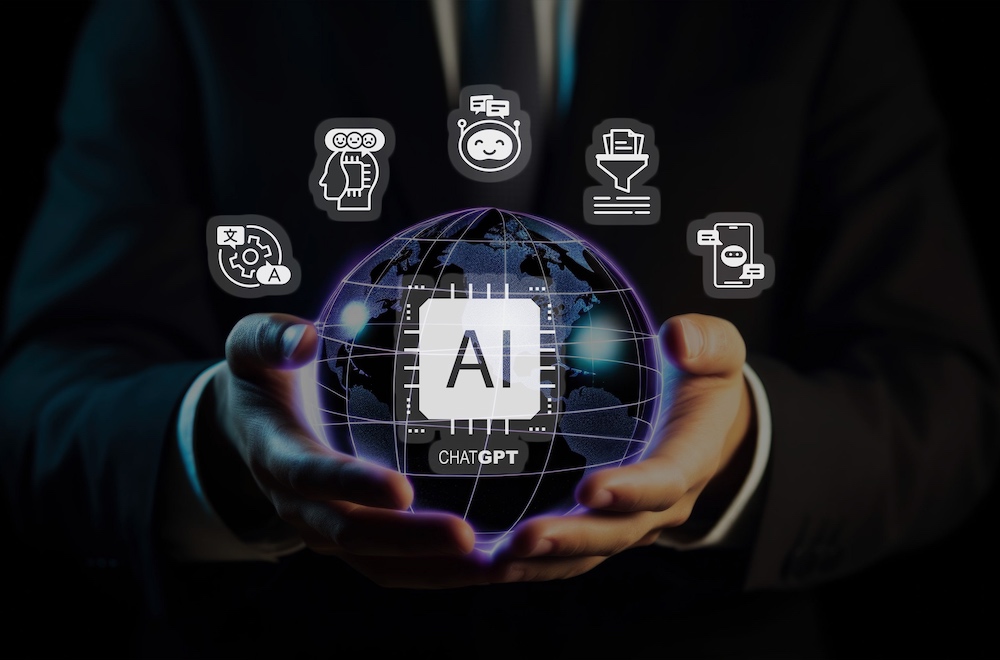Using ChatGPT For Medical School Curriculum Development
In the ever-evolving landscape of medical education and healthcare simulation, innovative technologies continue to shape how educators teach and students learn. Among these cutting-edge advancements, ChatGPT—an artificial intelligence language model—has emerged as a powerful tool for creating engaging and comprehensive medical school curricula. This HealthySimulation.com article explores the remarkable potential of ChatGPT to revolutionize medical education with specific examples of how the author currently uses the technology in designing medical school curricula. There will be a focus on the ability of ChatGPT in the development of learning objectives, assistance with PowerPoint presentation design, simplification of complex concepts for specific learner levels, design of medical simulation cases, curriculum mapping, and the establishment of protocols and procedures. There will also be a discussion of some of the pitfalls of using generative AI models like ChatGPT and a look ahead to where this technology is taking medical education.
What is ChatGPT?
ChatGPT is an advanced artificial intelligence language model developed by OpenAI. Built upon the robust Transformer architecture, ChatGPT possesses the ability to understand and generate human-like text based on the input received. ChatGPT functions by leveraging a vast amount of training data, including books, articles, and websites, allowing ChatGPT to learn patterns, context, and language structure. Through a process called unsupervised learning, ChatGPT can generate coherent and contextually relevant responses by predicting the most probable next word or phrase based on the given input. This cutting-edge technology enables ChatGPT to engage in natural language conversations, provide information, offer suggestions, and assist users across a wide range of topics. Many people use ChatGPT like a search engine, but the true power of this technology is when the creation and synthesis of multiple concepts are utilized to form new ideas.
Sponsored Content:
Creating Learning Objectives
One of the most valuable aspects of ChatGPT is the ability to create learning objectives from a given topic quickly. By having faculty input a specific topic or subject matter, ChatGPT can analyze the content and generate clear, SMART learning objectives that align with the educational goals of the course set by the faculty. These objectives are just a guideline or starting point and still require expert-level knowledge to ensure that the objectives are comprehensive and align with the desired outcomes of the overall curriculum. Because ChatGPT relies on searchable information from the internet, the technology requires faculty to give it specific constraints to work within. The more information ChatGPT is given, the more accurate an answer will be produced.
Assisting with PowerPoint Presentation Design and Ideas
Another area where ChatGPT excels is in assisting educators in designing captivating PowerPoint presentations. With a vast repository of knowledge and natural language processing capabilities, ChatGPT can help suggest appropriate visuals and provide insights on structuring content effectively. An example of this would be to ask ChatGPT to help map out an upcoming lecture into a PowerPoint. Start with telling the AI model how long the presentation will be, how many slides should be included, and the learning objectives of the session, and ChatGPT will create a detailed outline of the presentation layout to help the faculty begin to create the lecture.
Sponsored Content:
By leveraging ChatGPT’s creative potential, medical educators can craft visually engaging presentations that enhance student engagement and comprehension.
Simplifying Complex Concepts for Multiple Learner Levels
Medical education often involves conveying complex concepts to learners with varying levels of prior knowledge. ChatGPT offers invaluable support with the ability to simplify intricate medical topics and tailor explanations to suit different learner levels. ChatGPT is able to take a complex topic like the electrical conduction system of the heart and give different, yet still detailed, explanations on the topic that an elementary student through a graduate physician would find appropriate. By providing concise and accessible explanations, ChatGPT enables educators to bridge knowledge gaps and ensure a comprehensive understanding among students, regardless of their prior experience.
Assisting in Designing Medical Simulation Cases
ChatGPT is not limited to use in lecture preparation or small groups. Medical simulations serve as a crucial learning experience and enable students to apply theoretical knowledge in realistic scenarios. With a vast repository of medical knowledge and language processing capabilities, ChatGPT can assist educators in generating detailed patient histories, exam findings, and laboratory results that accurately reflect real-world scenarios. By incorporating these rich details into simulation cases, educators can provide students with lifelike clinical encounters, fostering a sense of authenticity and engagement.
One of the key advantages of leveraging ChatGPT in designing simulation cases is the tool’s capacity to generate diverse scenarios. By inputting specific parameters, educators can prompt ChatGPT to generate a wide range of patient conditions, symptoms, and diagnostic findings. This versatility allows for the creation of various scenarios, catering to different learning objectives and clinical specialties.
Not limited to the design of a medical simulation case, ChatGPT can also be used in the debriefing stage of a scenario. ChatGPT can assist in creating personalized feedback for each learner based on actions performed during the simulated experience. ChatGPT can provide this constructive feedback by highlighting areas of improvement while reinforcing areas of strength. This feedback is critical in helping participants reflect on their performance, identify knowledge gaps, and set goals for future sessions.
View the HealthySimulation.com LEARN CE/CME Platform Webinar Using AI, Augmented Reality & Mixed Reality to Enhance Clinical Training Experiences to learn more!
Curriculum Mapping and Policy Design
Curriculum mapping to meet the requirements set by governing bodies is a critical aspect of medical education, and ChatGPT can play a valuable role in this process. By analyzing the guidelines and regulations set by these bodies, ChatGPT can assist educators in mapping the institution’s specific curriculum to ensure compliance with the stipulated requirements.
ChatGPT can also be used to help design specialized policies and procedures for a specific medical education program. The AI program can offer guidance and suggestions that assist educators in crafting clear and concise documents that outline the best practices for a unique simulation lab or class program.
Limitations of ChatGPT
While ChatGPT offers an array of remarkable capabilities, there are certain areas where the technology falls short. A significant risk for educators is ChatGPT’s inability to cite sources accurately, particularly for the latest developments in research and treatment protocols. The reason this is challenging for ChatGPT is that the knowledge cutoff of where the AI pulls information from is not constantly updated which can lead to either outdated or completely inaccurate statements from the AI. ChatGPT is aware of this and states at the bottom of every chat that “ChatGPT may produce inaccurate information about people, places, or facts”. Therefore, educators must ensure the incorporation of up-to-date research and treatment guidelines by consulting reliable sources outside of this AI model. This potential for ChatGPT and other generative AI programs to give incorrect information is why having a content expert check everything the AI produces is incredibly important for any meaningful work being completed using the technology.
The Future of Medical Education with AI
AI engines like ChatGPT will only continue to improve and affect how healthcare students are taught. With things like personalized tutoring, AI-driven Virtual reality scenarios, and complex data analytics customized to each student, the technology is just scratching the surface of what is possible. While the potential for AI inside of medical education and curriculum design is vast, the fact remains that human expertise and guidance remain essential. The role of educators as mentors, facilitators, and final approval for the data produced by AI is needed to ensure that the highest level of ethical consideration is maintained and the standards of patient care for future healthcare practitioners is increased.
Try Using ChatGPT Generative Artificial Intelligence
Wesley Lockhart, PhD.c, MSMS, CHSE, CHSOS – Wesley has been involved in medical simulation for almost two decades, having started his simulation career as a Standardized Patient throughout high school and college. His first position out of college while preparing for medical school was a simulation technician at UC Riverside, he fell in love with medical simulation and the impact it could have on future providers and their future patients. After deciding against medical school, Wesley pursued a graduate degree in Medical Simulation from Drexel University, received his CHSE and CHSOS from SSH, and is currently a PhD candidate at MGH-IHP. Currently, Wesley works as the Simulation Director at the newly established University of Texas Tyler School of Medicine after 8 years at UC Riverside. His interests in simulation focus on Artificial Intelligence, Virtual Reality, Mastery learning, Debriefing, and integrating simulation into established curricula. Wesley lives in East Texas with his wife Kristen, daughter Sophie, and 3 standard poodles. When not head down in a simulation scenario, Wesley enjoys video games, fantasy novels, escape rooms, and board games with friends.
Sponsored Content:


















